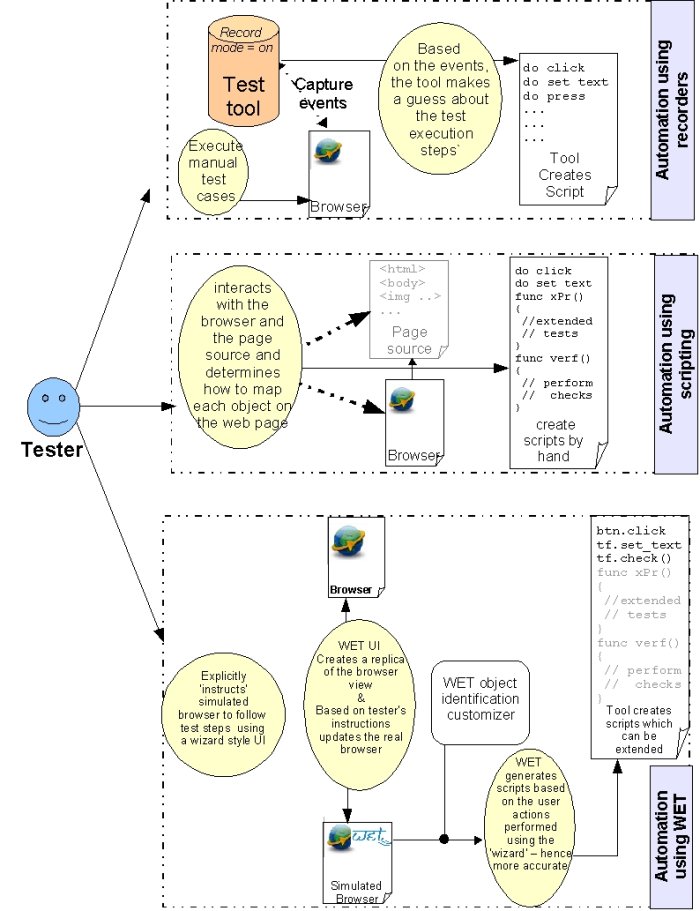Things should be made as simple as possible but not simpler
Albert Einstein
The use of test recorders in automation, is a concept that, of late has been advocated against by
experts. Instead, they advice the use of scripting tests from the ground up. While recorders offer you a faster development
time, scripting allows you to take full control of the application that you are trying to test. The latter obviously is a lot
more tedious and time-consuming. WET allows you to take advantage of the best of both worlds. The following illustration will
help understand the limitations of recorders, strength of scripting and the advanatage of using WET.

|
|
Recorders
- Create scripts by 'reverse mapping' events back to actions - being a 'guessing technique', not too
accurate
- Guess about how to identify objects.
- In cases where recorders have scripting abilities, usually the scripts generated by the
recorder cannot be used if you switch to the 'the scripting way'
|
|
|
Scripting
-
Test automation engineer inspects the web page source in detail and
writes the script required for each operation.
- Extremely time consuming
|
|
|
WET UI
- Perform test steps on the simulated browser (aka Proxied UI).
No guesses – results in accurate scripts
- Configurable Object identification
- Powerful scripting ability unlike most recorder based tools
-
Experts can extend tests to any level. Can step out of the typical UI
automation and acheive a end to end system test
- UI generated scripts can be completely used even if you go the 'scripting way'.
-
-
Beginners can use the WET UI to generate the complete test: Experts can
use to map objects, create object depots (aka repository) and build a skeleton.
|
|
Click here to read the complete article




